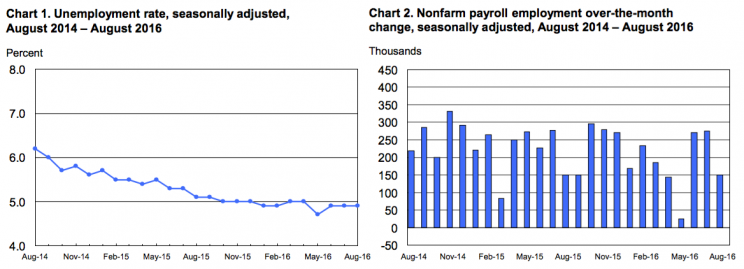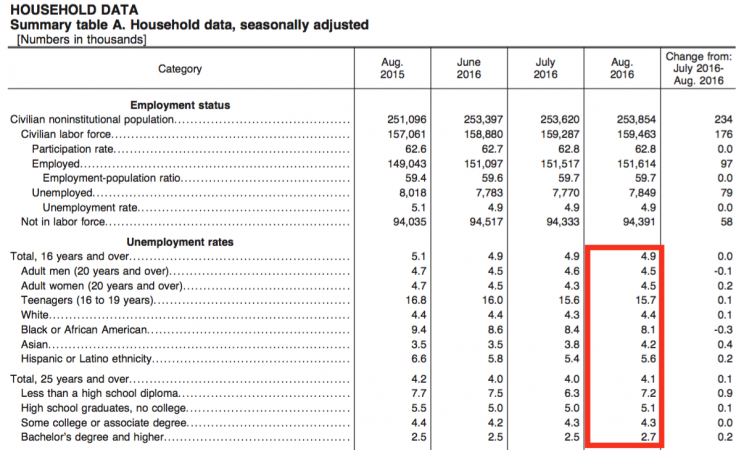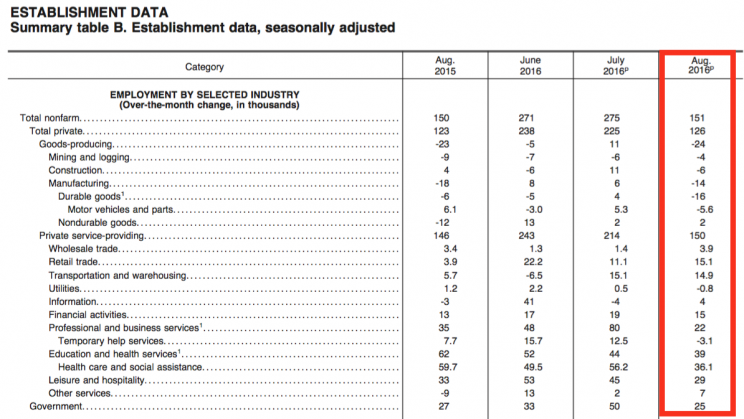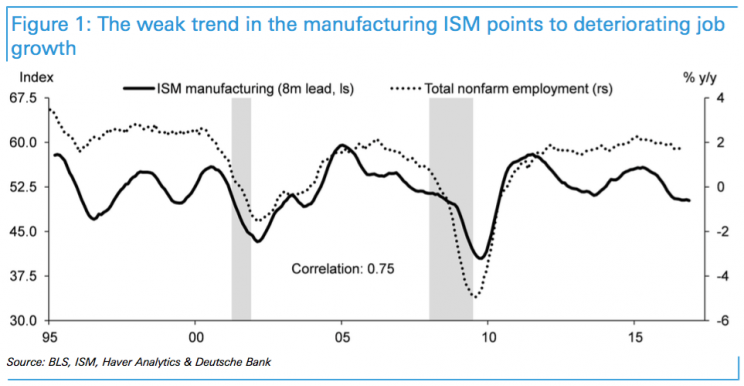US adds 151,000 jobs, unemployment rate unchanged at 4.9%
The US labor market disappointed in August.
US companies added just 151,000 payrolls during the month, missing expectations for 180,000 payrolls. While the numbers were lighter than expected, it reflects the 71st consecutive month of job gains, which is already the longest streak on record.
The unemployment rate stood at 4.9% in August, which was higher than the 4.8% forecast by economists. Notably, the July unemployment rate was revised up to 4.9% from an earlier estimate of 4.8%.

Below is a look at unemployment rates by demographic. Most categories saw unemployment rates climb. Notably the unemployment rate for people with less than a high school diploma jumped to 7.2% from 6.3%.

Here’s a look at the number of payrolls added by industry. Manufacturing was particularly weak with payrolls falling by 14,000 during the month. On the other hand, the services sector was much more robust, adding 150,000 payrolls.

Average hourly earnings climbed at a 2.4% pace, which was a bit lighter than the 2.5% expected.
The ongoing net addition of jobs continues to be welcome news for the US economy, which is now seven years removed from the global financial crisis.
But the slowing pace is a bit concerning. All of this complicates things for the Federal Reserve, which has signaling that tighter monetary policy could be coming soon.
What this could mean for the Fed
The Fed’s Federal Open Market Committee (FOMC) meets later this month to discuss and decide on the direction of monetary policy, which includes the prospect of interest rate hikes.
“The August employment report will be an important input into the FOMC decision at the September 20-21 meeting,” Goldman Sachs’ Elad Pashtan said.
Despite what continues to be an uncertain global economic and geopolitical environment, US economic data continue to hold up. This has put pressure on the Federal Reserve to tighten monetary policy a bit with an interest rate hike, which it last did in December.
“Indeed, in light of the continued solid performance of the labor market and our outlook for economic activity and inflation, I believe the case for an increase in the federal funds rate has strengthened in recent months,” Federal Reserve Chair Janet Yellen said at last week’s Kansas City Fed Economic Policy Symposium in Jackson Hole, Wyoming.
Currently, traders are betting that the next rate hike from the Fed will come in December. But no one has completely ruled out September, especially following Yellen’s hawkish tone.
Other labor market indicators moderate
According to payroll processor ADP, US companies added 177,000 private jobs in August. This compares to 194,000 in July.
The employment sub-indexes for the US national and regional manufacturing surveys broadly saw deterioration in August. The ISM manufacturing report, the Philadelphia Fed Business Outlook report, the Dallas Fed Manufacturing Outlook report, and the Kansas City Fed Manufacturing Survey all signaled slowdowns in hiring.
“A slower pace of hiring is entirely consistent with the historical performance of the labor market at the latter stages of the business cycle,” Deutsche Bank’s Joe Lavorgna said on Thursday. “Typically, when the unemployment rate has approached 5%, the rate of job creation has slowed. The recent performance of the manufacturing ISM survey is also telling us that employment growth should continue to trend downward.”

The headline ISM manufacturing index fell to 49.4 in August from 52.6 in July. This sub-50 reading signaled the first contraction in US manufacturing in six months.
Bear in mind that monthly data can be noisy and are subject to revisions.
–
Sam Ro is managing editor at Yahoo Finance.
Read more:
Bullishness in the derivatives market has hit a 3-year high
Don’t be fooled by the calm in the markets
The stage is set for the next 10% plunge in stocks
David Rosenberg nails the stock market in a perfect sentence
